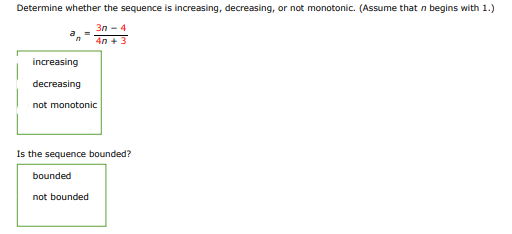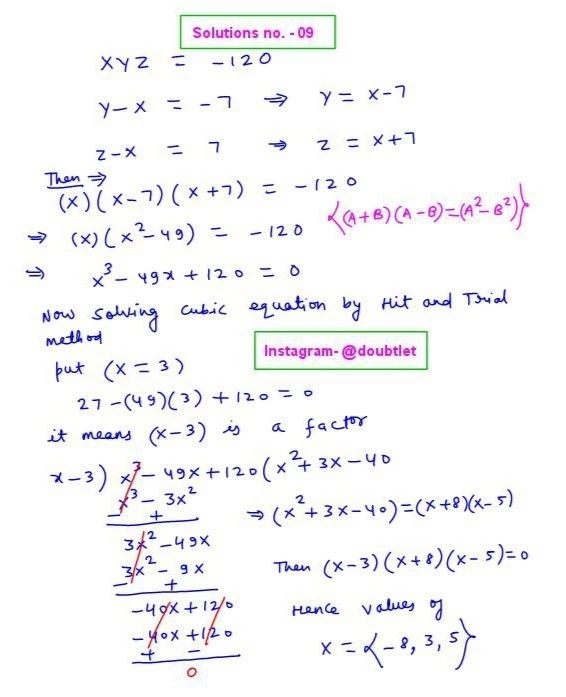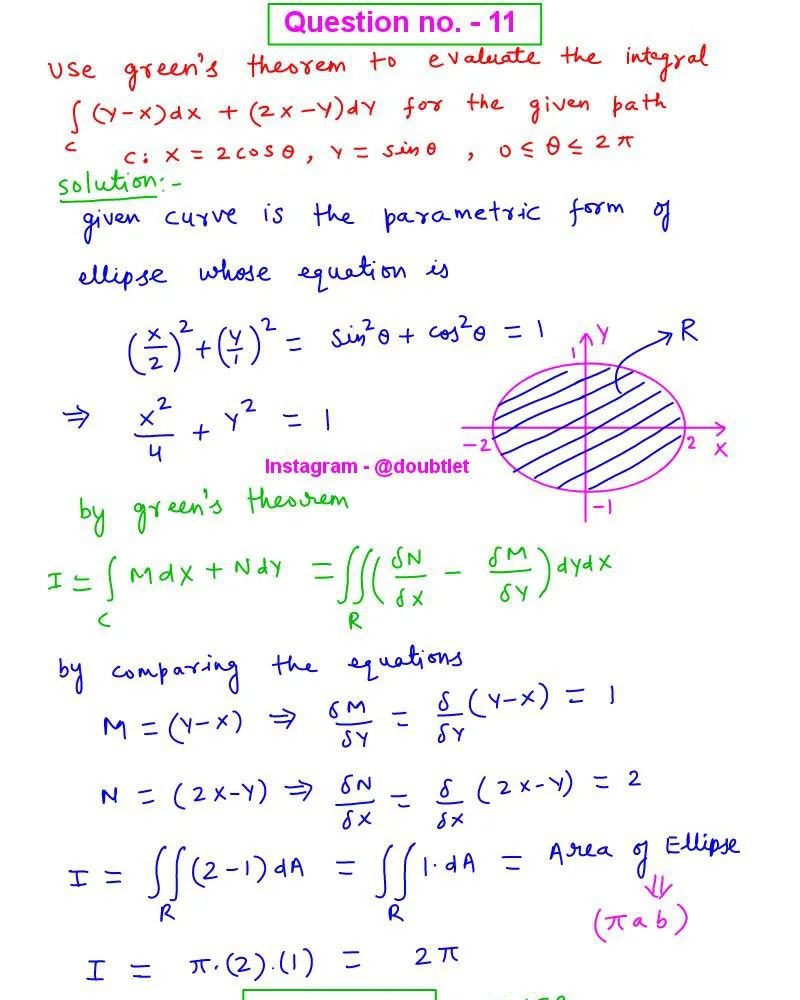
Neetesh Kumar | December 31, 2024
Calculus Homework Help
This is the solution to Math 1c
Assignment: 11.1 Question Number 37
Contact me if you need help with Homework, Assignments, Tutoring Sessions, or Exams for STEM subjects.
You can see our Testimonials or Vouches from here of the previous works I have done.
Get Homework Help
Step-by-step solution:
Part (a): Determine monotonicity:
Step 1: Compute an+1 and compare it to an:
The sequence is an=4n+33n−4.
To determine if it is increasing or decreasing, we analyze the difference an+1−an.
Step 2: Write an+1:
Substitute n+1 into the formula for an:
an+1=4(n+1)+33(n+1)−4=4n+4+33n+3−4=4n+73n−1
Step 3: Analyze an+1−an:
Compute the difference:
an+1−an=4n+73n−1−4n+33n−4
Combine under a common denominator:
an+1−an=(4n+7)(4n+3)(3n−1)(4n+3)−(3n−4)(4n+7)
Expand the numerator:
(3n−1)(4n+3)=12n2+9n−4n−3=12n2+5n−3
(3n−4)(4n+7)=12n2+21n−16n−28=12n2+5n−28
Subtract the two terms:
an+1−an=(4n+7)(4n+3)(12n2+5n−3)−(12n2+5n−28)
Simplify the numerator:
12n2+5n−3−12n2−5n+28=25
Thus:
an+1−an=(4n+7)(4n+3)25
Step 4: Sign of an+1−an:
The denominator (4n+7)(4n+3)>0 for all n≥1, and the numerator 25>0.
Therefore:
an+1−an>0
This shows that the sequence is increasing.
Part (b): Determine boundedness:
Step 1: Check for upper and lower bounds:
The sequence is:
an=4n+33n−4
For large n, divide numerator and denominator by n:
an=4+n33−n4→43as n→∞
For n=1, a1=4(1)+33(1)−4=7−1=−71. Therefore, the sequence is bounded below by −71 and above by 43.
Step 2: Conclusion:
The sequence is bounded.
Final Answers:
(a) The sequence is increasing
(b) The sequence is bounded
Please comment below if you find any error in this solution.
If this solution helps, then please share this with your friends.
Please subscribe to my
Youtube channel for video solutions to similar questions.
Keep Smiling :-)















Leave a comment